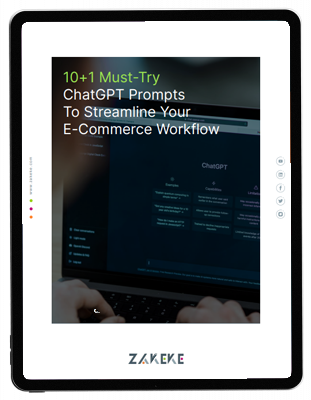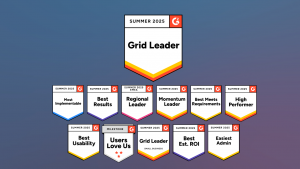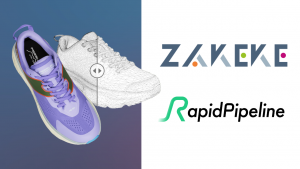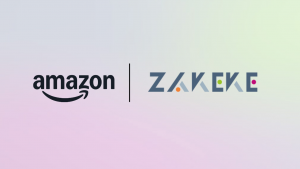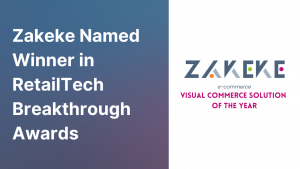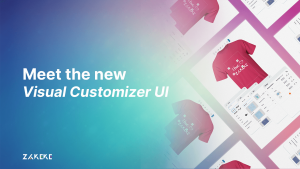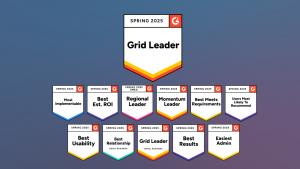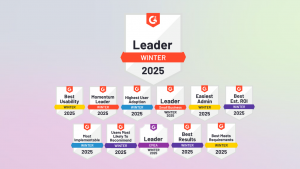You’ve invested time and effort into creating the perfect online store. Your products are top-notch, and your website is visually appealing. However, despite your best efforts, sales are lagging. The issue? Your target audience can’t find you, or they’re getting distracted before making a purchase.
According to a study by Hootsuite, 87% of online shoppers say social media helps them discover new products, and 71% are more likely to purchase from a brand they follow on social media.
It means that e-commerce advertising is crucial to placing your products in front of the right people at the right time. By leveraging effective advertising strategies, you can convert browsers into buyers and drive sales.
Let’s dive into the 8 e-commerce advertising strategies that will help you achieve this goal.
Understanding the Difference Between Browsers and Buyers
Not everyone who visits your website is ready to whip out their credit card. Understanding the difference between casual browsers and those ready to buy is crucial for effective e-commerce advertising.
- Browsers: They might be curious, comparing options, or simply enjoying some online window shopping. They need nurturing. Captivate them with your brand story, highlight the value you offer, and build trust over time.
- Buyers: These visitors have a specific need or problem they want to solve – and your product could be the answer! Your ads and website should speak directly to their pain points, emphasize the benefits they’ll gain, and make the purchase process as seamless as possible.
Knowing the difference lets you tailor your approach. Browsers need to be convinced that you’re the best choice. Buyers need a clear path to “Add to Cart” with minimal distractions.
E-commerce Advertising First Step: Target the Right Audience with Precision
Advertising in e-commerce is an efficient tool that reads people’s minds. That’s the power of targeting the right audience. Instead of shouting into a crowd, you should focus on the people most likely to love what you offer. This will save you money and get your products in front of eager eyes.
You might be wondering how it works, right? The best practices involve understanding your ideal customer. This involves multiple factors, such as age, location, what websites they visit, and even what they’ve searched for online.
Advertising in e-commerce is complex. If you need help with how to do it and are feeling overwhelmed, don’t worry. Sometimes, it pays to get expert advertising agencies and consultants to know the ins and outs of these platforms. They can optimize your campaigns for maximum results. It can be a game-changer if you have a limited budget, want to reach a new market, or need advanced strategies.
Additionally, there are multiple e-commerce advertising platforms, which are your superpower here. For instance, Google Ads lets you target specific search terms and shopping behaviors. At the same time, Facebook and Instagram ads let you pinpoint people based on interests and demographics.
Strategy 2: Master the Art of Retargeting
Ever leave a website only to see ads for those exact products pop up later? That’s retargeting in action! It’s a brilliant way to give your potential customers a gentle nudge. You’re not targeting strangers anymore – these people have already shown interest in your store.
Why is this so powerful? Sometimes, people leave your site because of distractions or because they need more time to think. Retargeting keeps your brand fresh in their minds. It builds familiarity and reminds them of what caught their eye. The result? There’s a much higher chance they’ll come back and finish that purchase.
The right platforms make all the difference in e-commerce retargeting. Tools like Google Ads and Facebook Ads let you show targeted ads across the web and on social media. There are also specialized retargeting platforms that offer even more features for online stores.
Strategy 3: Craft Compelling Ad Copy and Visuals
Your ad needs to grab attention and make people want to click – fast! This is where compelling copy and knockout visuals become your best friends.
Start with your headline. Make it short, punchy, and benefit-driven.
Don’t just say “Stylish Backpack” – instead, try “Upgrade Your Adventures with 20% Off.” Your call-to-action (CTA) needs to be crystal clear. Tell people exactly what to do: “Shop Now,” “Learn More,” and “Claim Your Discount.”
Images matter just as much! Ditch blurry photos. Invest in high-quality product shots that show every detail. Lifestyle images that make people imagine using your product are even better. Videos in e-commerce can be super powerful, too, especially short ones that showcase the product in action.
Don’t guess what works best – test it! Try different headlines, images, and CTAs to see what gets the most clicks. The data will tell you what your audience loves.
Strategy 4: Build High-Quality Backlinks to Boost Your Authority
Backlinks work as votes of confidence for your e-commerce store. When other websites link to yours, it signals to search engines that you’re a trusted, relevant source. This leads to better rankings, meaning more people will find you organically. Backlinks can also send direct traffic your way when people click them on other sites.
So, how do you build these valuable links? There are a few key strategies:
- Content is King: Create awesome blog posts, guides, or infographics that other websites will actually want to share.
- Guest Blogging: Contribute articles to relevant blogs and websites in return for a link back to your store.
- Resource Link Building: Position your store as a helpful resource and suggest your link to relevant websites.
Here’s the thing: Link building takes time and effort. It also requires knowing which sites to target and how to approach them. If you feel overwhelmed or lack the time, this is a prime area to consider expert help. Agencies specializing in link building understand the ins and outs of link building. They can secure high-quality links that make a real difference in your rankings.
Strategy 5: Leverage Social Proof and Urgency
Tap into the power of persuasion with social proof and urgency! These tactics play a role in how our brains are wired. When we see other people loving a product, it makes us trust it more. And when we think something might be scarce or time-limited, we have a sudden fear of missing out.
How do you use this to your advantage? Sprinkle social proof everywhere! Showcase glowing reviews and testimonials prominently. Highlight your number of satisfied customers. If you have any awards or certifications, display those too.
Add a dose of urgency with limited-time offers (“Sale Ends Tonight!”) or by showing low stock levels (“Only 3 Left!”). Just be honest – fake urgency backfires and damages trust. People see through overly gimmicky tactics. When used ethically, these techniques can be the nudge a hesitant shopper needs.
Strategy 6: Optimize Your E-commerce Advertising Landing Pages
Your landing page is the final step in closing the deal, the most important of your e-commerce advertising strategy. You’ve hooked them with a great ad; now, don’t lose them at the finish line! If your landing page doesn’t match the ad’s promise, it creates a confusing mismatch that leads to mistrust. If it’s slow to load, people get impatient and leave. If it looks terrible on mobile, you’re missing out on a huge chunk of potential customers.
Keep your messaging consistent. The headline, images, and offer on your landing page should mirror what drew them in from the ad. Optimize for speed – use tools like Google PageSpeed Insights to identify bottlenecks. Design with mobile users in mind – make everything easy to read and tap on smaller screens. Above all, have super clear calls to action (CTAs). Don’t make people hunt for the “Buy Now” button!
Landing page optimization might seem nitpicky, but it’s one of the most impactful ways to turn browsers into buyers. A few small tweaks can make a world of difference in your conversion rate.
Strategy 7: Use Email Marketing for Nurturing
Email marketing for e-commerce is a powerful tool for turning casual browsers into loyal customers. Here’s how to use it effectively:
- Abandoned Cart Recovery: This is e-commerce gold! Send automated emails reminding shoppers about the awesome items they left behind. Include a clear link back to their cart to make it easy to complete the purchase.
- Personalized Product Recommendations: Do you know what your customers have browsed or bought? Use this information to send targeted emails with relevant product suggestions. It’s like a virtual personal shopper, increasing the chances they’ll find something they love.
- Promotional Offers: Give subscribers a reason to open your emails! Offer exclusive discounts, early access to sales, or special perks just for them. This builds loyalty and encourages spending.
- Paid Email Advertising (Brief Mention): While nurturing your existing list is key, consider the potential of paid email advertising. Targeted ads in relevant newsletters or sponsored content can help you reach new, qualified leads interested in your niche.
Strategy 8: Explore Influencer Marketing
Partnering with the right influencers can put your products in front of a massive, engaged audience that already trusts the influencer’s recommendations. It’s a smart way to expand your reach and tap into the power of social proof, leveraging one of the most important allies for e-commerce advertising.
The key to success lies in authenticity. Choose influencers whose values and audience genuinely align with your brand. Don’t just pick someone with the most followers – a smaller, niche influencer might be a much better fit if their audience is the perfect target market for your products.
There are lots of ways to collaborate with influencers. Sponsored posts where that highlight your product are classic. Honest product reviews can be super influential, especially if the influencer is known for being discerning. Affiliate links, where the influencer gets a commission on sales they drive, are another common model. Get creative! The best influencer partnerships feel organic and add value for the audience, not just pushy sales pitches.
Conclusion
We’ve covered a powerful arsenal of e-commerce advertising strategies! From targeting the right audience and mastering retargeting to the persuasive use of social proof and well-crafted landing pages, there are many ways to reach potential customers effectively.
Remember, the best results come from a multi-channel approach. Don’t be afraid to experiment! Test different ad formats, landing page designs, and offers to see what resonates best with your audience.




